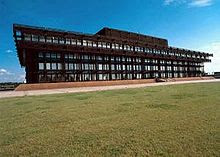Iain Sinclair, the banned author,will be reading and discussing his new book "
Ghost Milk" at Dalston's Vortex jazz club on Tuesday 28th June at 8pm.
As part of the Vortex Wordplay series the evening will also feature music from the Dulce Tones - the musicians who performed at
OPEN Dalston's St Barnabas event last September.
You can buy tickets here for £5 in advance
Ghost milk. "
What does this mean?" Sinclair is asked
"
CGI smears on the blue fence" he replies. "
Real juice from a virtual host. Embalming fluid. A soup of photographic negatives. Soul food for the dead. The universal element in which we sink and swim"
"
You can't write about this. They'll never believe it" Anna Sinclair warns Iain, her husband.
But now he has written about it. All of it.
Ghost Milk.
"
A wonderful kind of alchemy is at work" J G Ballard observed in Sinclair's writing. The Sunday Times described his work as "
remarkable, compelling, bristles with unexpected, frequently lurid life".
 Photo copyright of Mike Wells
Hackney's ban on Sinclair was imposed in October 2008
Photo copyright of Mike Wells
Hackney's ban on Sinclair was imposed in October 2008 just prior to the publication of his last book "
Hackney,that rose-red empire. A confidential report"
"
We should not host an event which....actively promotes an opinion which contradicts our aims and values as an organisation - in this case the 2012 games and legacy. I have discussed the PR ramifications of this with Jules Pipe [Hackney's Mayor -Ed.] and he is comfortable with this approach"
Polly Rance, Head of Media, Hackney Council
 Photo copyright of Alan Denney
Photo copyright of Alan Denney
The Council's invitation to Sinclair to speak in Stoke Newington was withdrawn even before the book had been read.
"
Now I was one of them, promoted to the status of non-person" writes Sinclair in
Ghost Milk. "
I took it as a tribute, after all this time, to be thought worthy of being invited to leave the premises....
My docu-novel closed with the erection of the blue fence around the Olympic Park...".
Burrowing under the perimeter fence of the grandest of Grand Projects - the giant myth that is the 2012's London Olympics -
Ghost Milk finds a landscape under sentance of death...
"
Sinclair's most powerful statement yet on the throwaway impermanence of the present."
 Photo copyright of Mike Wells - 2.5 million cu metres of spoil, including radioactive material, is moved around the 2012 Olympic site
Photo copyright of Mike Wells - 2.5 million cu metres of spoil, including radioactive material, is moved around the 2012 Olympic siteSinclair's Acknowledgements in
Ghost Milk includes a final dedication to Hackney's Mayor Jules Pipe "
...a constant inspiration as he remakes the borough of Hackney as a model surrealist wonderland".

 Photo by Squint/Opera
Photo by Squint/Opera "This evocative fiction hovers over such moments in an imagined future to make haunting, magical radio" says the Guardian review.
"This evocative fiction hovers over such moments in an imagined future to make haunting, magical radio" says the Guardian review.














